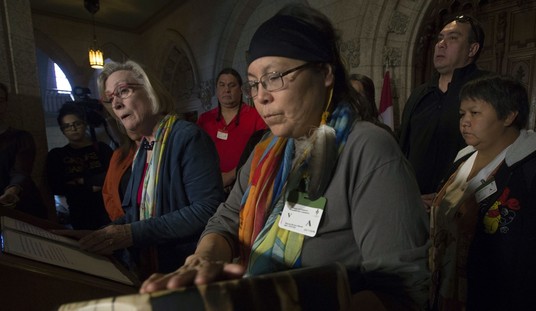The climate hysterics are having a gay old time this week because, for a while, New York City’s air quality index was the worst in the world — worse than Beijing’s and even Delhi. To give you an idea of how bad that is, people in those two cities suffering from respiratory illnesses are in danger of dying because the air is so bad.
“The health effects of pollution far from its origin have not been studied in such detail, but this danger from a distance is changing the way we think about the menace of wildfire and of climate change,” writes New York Times science writer David Wallace-Wells. “If 10 years ago Californians feared fire, more recently they’ve begun to fear smoke — even as every one of the state’s 15 largest recorded fires has taken place in the past two decades. Six of the seven largest have burned since 2020.”
“Canada’s wildfires are part of our new climate reality, experts and officials say,” according to The Guardian. “The fires are a ‘really clear sign of climate change’, said Mohammadreza Alizadeh, a researcher at McGill University”
So that’s it, then? The science is settled? Not hardly.
New York Post columnist Miranda Devine offers an alternative theory: Incompetence and mismanagement.
The situation in Canada is similar to that in Australia, where green ideology and chronic government underfunding mean that the forests currently ablaze have not been managed properly for years.
Instead of dead wood and undergrowth being removed regularly using low-intensity controlled or “prescribed” burns, forests have become overgrown tinderboxes. Fire trails that used to allow first responders easy access to the forest have closed over as vast tracts of land are locked away from humans. Logging and other commercial practices that used to self-interestedly tend to forest health have been phased out.
A 2020 paper in the journal Progress in Disaster Science warned, “Wildfire management agencies in Canada are at a tipping point. Presuppression and suppression costs are increasing but program budgets are not.”
Why weren’t these warnings heeded?
Canadian indigenous groups also have complained that bureaucratic obstacles hinder their ability to perform the controlled burns they have used for centuries to reduce fuel load, flush out food and regenerate forests.
But in our enlightened era, pressure from green activists using illogical emotional arguments about wildlife habitats have caused governments to underfund and curtail the scientific use of prescribed burning to mitigate wildfire risk.
It’s not just Canada incompetently managing our forests. The United States is afflicted with the same green disease that values emotional attachment to wildlife and habitat rather than the science of forest management.
Related: Utah Homes Slide Off a Cliff, as Does the Nation
“Fires have always been part of our ecosystem,” said Mike Rogers, a former Angeles National Forest supervisor and board member of the National Association of Forest Service Retirees. “Forest management is a lot like gardening. You have to keep the forest open and thin.”
Cal Fire is steadily receiving injections of money to do what it can to reduce wildfire risk, including better land management and training a new generation of foresters. In 2018, former Gov. Jerry Brown signed a bill that will allocate $1 billion over five years to Cal Fire to be used on fire prevention measures. But experts warn that more money is needed.
Indeed, federal regulations like the Clean Air Act have thrown a monkeywrench into efforts to use controlled burn fires to cull the thick undergrowth and deadwood in forests that make wildfires worse by an order of magnitude.
But saying that green policies actually lead to worse wildfires is tantamount to blasphemy. So green hysterics will continue to blame climate change and loggers for the severity of fires that could be lessened by applying some common sense forest management in place of ideology.










